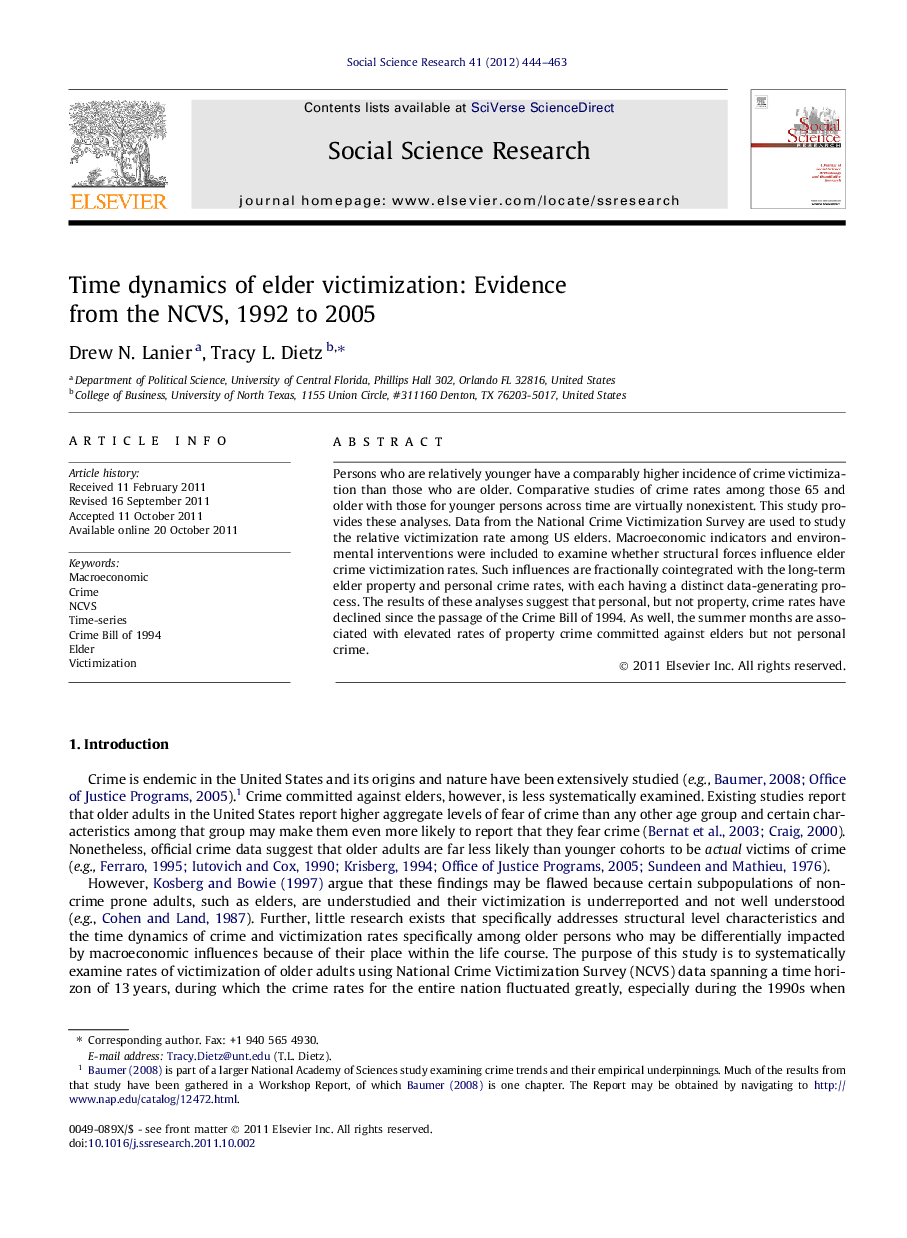| Article ID | Journal | Published Year | Pages | File Type |
|---|---|---|---|---|
| 955971 | Social Science Research | 2012 | 20 Pages |
Persons who are relatively younger have a comparably higher incidence of crime victimization than those who are older. Comparative studies of crime rates among those 65 and older with those for younger persons across time are virtually nonexistent. This study provides these analyses. Data from the National Crime Victimization Survey are used to study the relative victimization rate among US elders. Macroeconomic indicators and environmental interventions were included to examine whether structural forces influence elder crime victimization rates. Such influences are fractionally cointegrated with the long-term elder property and personal crime rates, with each having a distinct data-generating process. The results of these analyses suggest that personal, but not property, crime rates have declined since the passage of the Crime Bill of 1994. As well, the summer months are associated with elevated rates of property crime committed against elders but not personal crime.
► Property crime is more frequent among elders than personal crime. ► Economic changes are more strongly related to property than to personal offenses. ► The US Crime negatively affected personal crime rates. ► Crime rate among elders was influenced by the occurrence of the summer months. ► Unemployment, savings, and poverty impact the elder personal crime rate.
